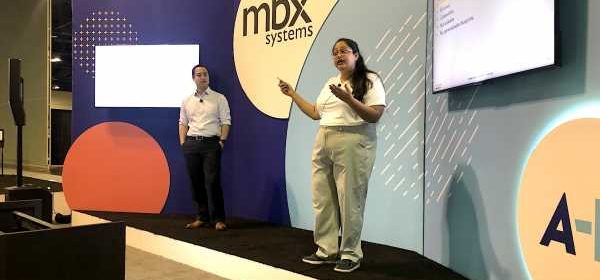How open source innovation can mitigate digital health inequities

Photo: Emily Olsen/MobiHealthNews
The COVID-19 pandemic forced many patients and providers to utilize telehealth and other virtual methods of delivering care. But not everyone was able to switch to telehealth in 2020. Cancer screenings and outpatient visits decreased, leaving some of the most vulnerable and underserved communities without access to care.
“We need to really be a lot more intentional and purposeful with how we define what health equity means in the context of digital health,” Dr. Keisuke Nakagawa, director of innovation at UC Davis Health’s Digital CoLab and executive director of its new Cloud Innovation Lab, said at HIMSS22.
“I don’t want us to be necessarily vetted to one definition, but also be very mindful about at any given point in time in our technology, who are the patients that are getting left behind? Who are the clinicians that are getting left behind? And I actually want to broaden that definition. What are the health systems that are also getting left behind?”
Nakagawa argues that innovation in healthcare is driven by intellectual property. For example, at an academic medical center like UC Davis Health, faculty have IP the health system can license out. But that isn’t as conducive to innovation as open source software, more common to the tech industry.
“We don’t have a Stack Overflow for healthcare. Imagine if that type of culture existed, sharing and open innovation. Ultimately, in healthcare, it’s also very competitive, and it’s not scalable,” he said.
The Cloud Innovation Lab, built on a partnership with Amazon Web Services, is looking for submissions on digital equity problems, and will publish results as open source for others to use and update.
Shilpa Vadodaria, worldwide innovation lead for health equity at Amazon, said the tech and retail giant’s model for innovation starts with imagining an ideal future state – without getting stuck on all the hurdles that need to be overcome – and working backwards.
“What if patient costs came down to zero? What if the healthcare system is designed around a Black, trans, disabled woman? Because right now we know that is not who is centered,” she said. “So these are the types of major, big ‘what if’ questions that we want to bring to the center of the conversation around digital health equity.”
The process is also consumer-centered, focusing on beginning with questions like: Who is the customer? What is the opportunity for that customer? How do you know what customers need or want? What is the customer experience?
“The process of working backwards is not about documenting what you already know you want to go all in on. It’s about what are your gnarly problem areas that you don’t actually have a solution for, that you do not even have a potential customer identified,” Vadodaria said.
The lab will officially launch in September.
“I feel like in medicine, we’re just constantly rushing from one patient to the next. There’s codes you can’t really take the time to really learn, and study, and understand as much as reacting with the knowledge that you have,” Nakagawa said. “But in innovation, we have that time. Just take a step back. We completely approach every single problem from a beginner’s mind.”
More regional news
Abbott's takeaways on boosting clinical trial diversity
Lack of relevant talent the main hurdle for healthcare technology startups in APAC, says report
Glooko acquires fellow diabetes management company DIABNEXT and more digital health briefs
Source: Read Full Article


